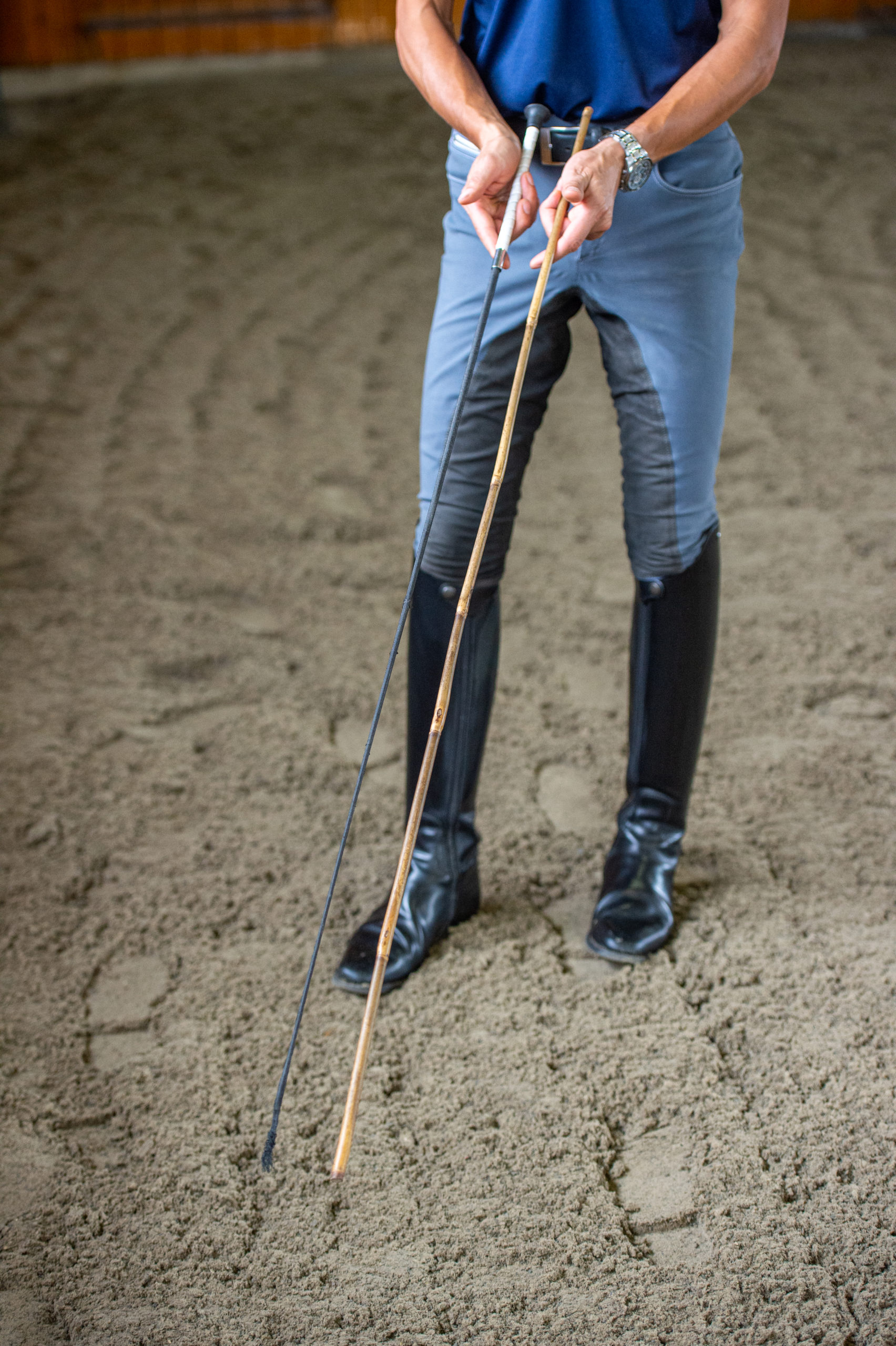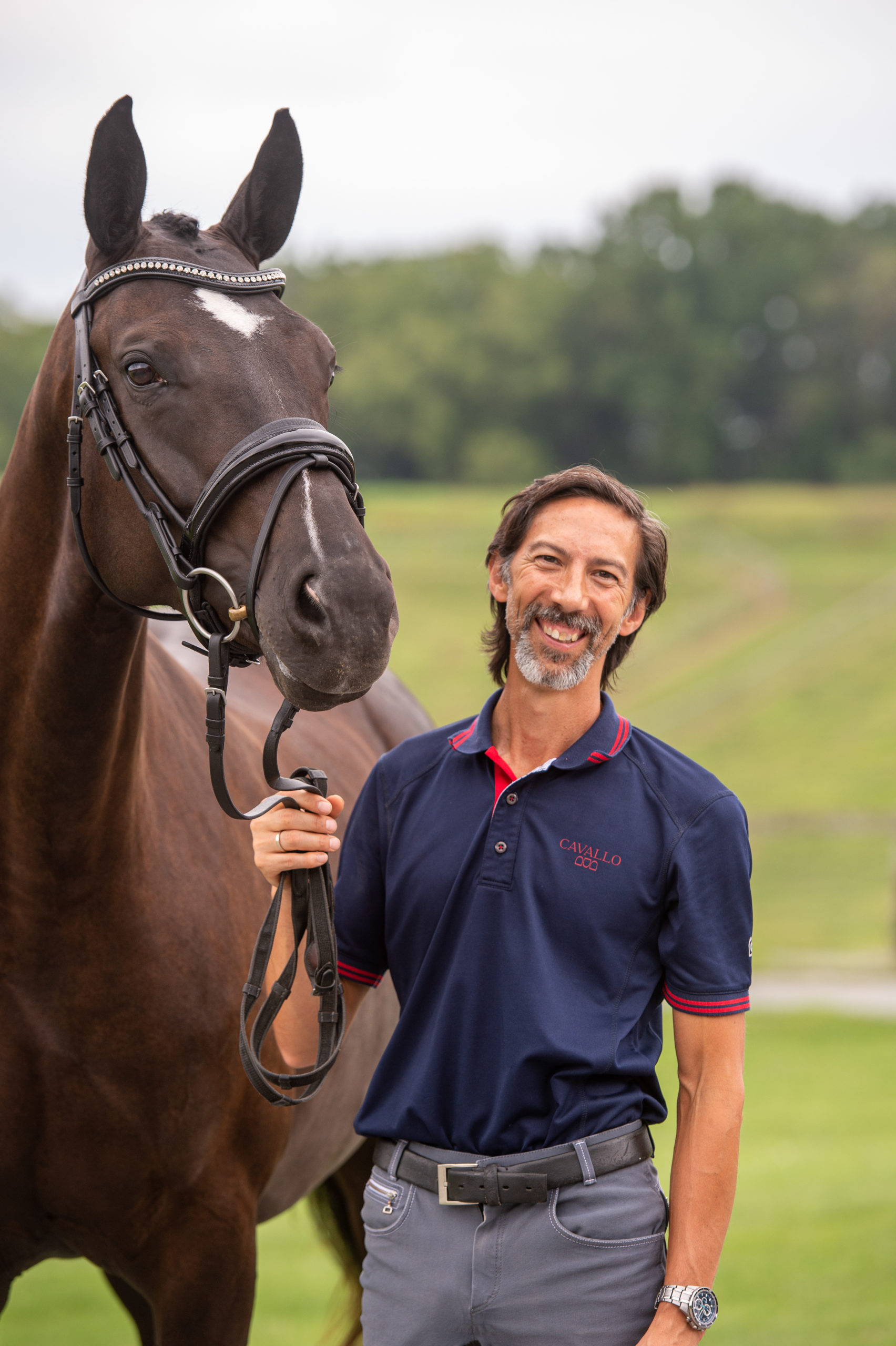The gentlest, most effective way to teach your horse to rein back is by starting on the ground. For these in-hand sessions, he needs only his regular bridle. Instead of a whip, which is too flimsy and unwieldy for these purposes, I recommend buying a lightweight bamboo stick from your local home or garden supply store. Trim it to about 4 feet long—or whatever length allows you to stand by your horse’s shoulder and easily tap the lower part of his back leg. This will allow you to apply cues precisely and get out of the way quickly if your horse kicks out (more on that later).

To introduce the rein back, choose a different vocal cue from the cluck you regularly use to ask your horse to go forward or engage more. This will help to eliminate any confusion when you eventually ask for the rein back from the saddle. I make a more traditional “tck” sound with my tongue to ask for forward/engagement, but a softer, repeated “tsch, tsch” for the rein back. Alternatively, you can just say, “Back.” What vocal cue you use doesn’t matter, so long as you consistently use the same cue every time you ask for a rein back.
For the initial rein-back lessons, halt your horse in the center of the arena. (Once he’s performing the rein back easily, it’s fine to practice this on the rail. Before that, it’s better to start in an open space, where you and your horse can move around freely. The confinement against the wall sometimes makes horses uncomfortable and resistant to the aids.) Stand in front and slightly to the side, facing him. Step toward him, tap him on the chest with the stick, and make your rein-back vocal cue. Continue this pressure until the moment he takes a step backward. Then immediately let off the pressure and praise him.
I try to teach this with as little rein contact as possible. If it is a young horse and he steps forward, I’ll gently correct him with soft pressure on one rein. If it’s a more advanced horse who is used to accepting the contact but isn’t grasping the concept of the rein back, I might add gentle, alternating pressure on the reins—right, left, right, left—in the direction of his chest (being sure to never pull on the bit so much that it slides through your horse’s mouth).
Build on this slowly over time, asking for just one step backward initially, then gradually asking for more. With practice, he should rein back in response to just your vocal cue. Use the same cue when you first ask for the rein back from the saddle. Eventually, you’ll be able to phase out the voice command as he learns to associate it with your riding aids.
About Michael Bragdell

Originally from Sweden, Michael Bragdell is a U.S. Dressage Federation certified instructor and bronze, silver and gold medalist. He is the training director at Hilltop Farm, in Colora, Maryland, where he has worked since 1995. Riding horses he started under saddle, Michael has won the U.S. Equestrian Federation Four-Year-Old National Championship twice and the USDF Dressage Finals three times. In 2017, he was accepted into the USEF Development Program with Sternlicht and Qredit. Two years later, he and Qredit placed fourth in the Grand Prix and sixth in the Freestyle at Dressage at Devon, the stallion’s first CDI. Successful as both a handler at breed shows and a rider in the dressage ring and sport horse testings, Michael also presents for the USDF Sport Horse Prospect Development Forums.

